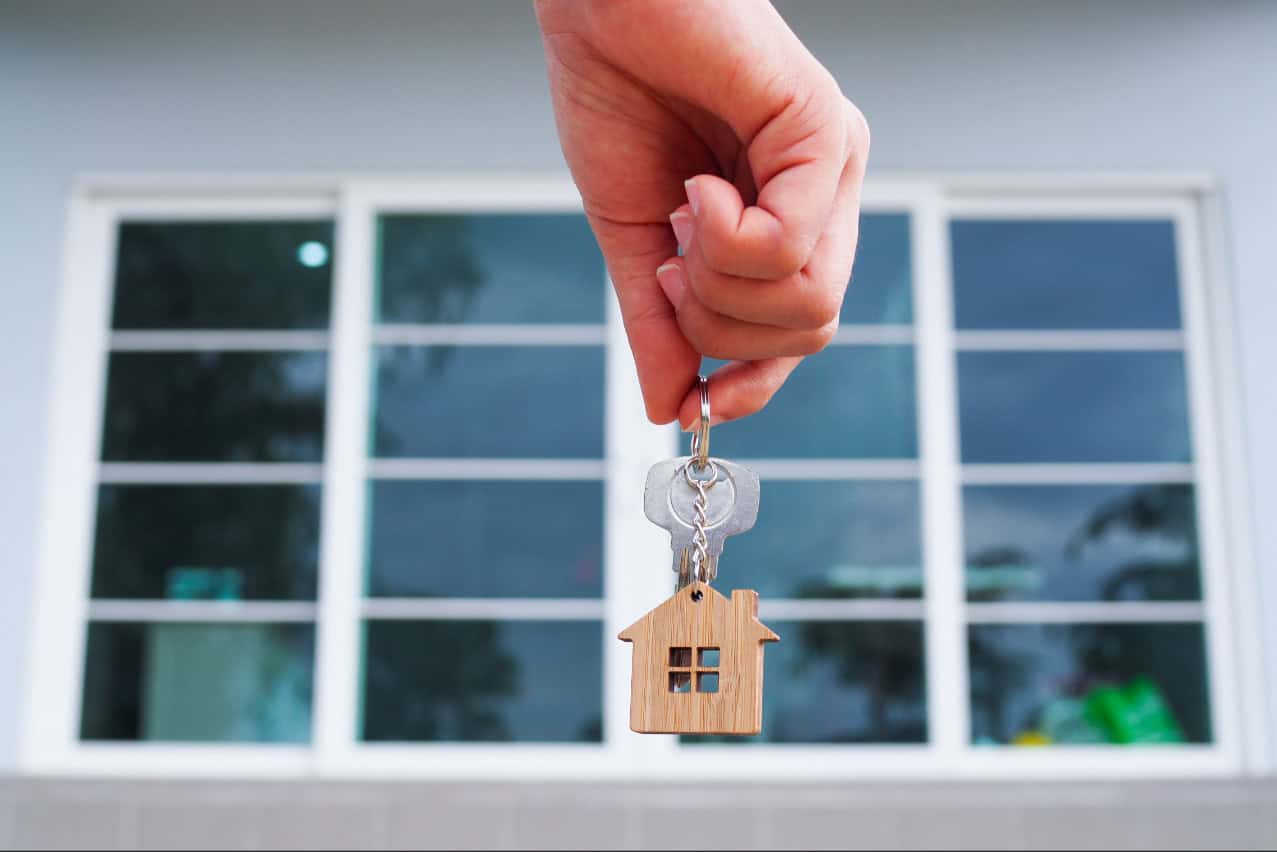Since the pandemic, there has been a paradigm shift in consumers’ and renters’ needs and expectations. A new normal has been established, and if your property management business doesn’t adapt, it may fail to thrive.
If you are a property owner or manager, you know how important it is to lease your available space. Nowadays, that includes utilizing the digital landscape by establishing an online presence, remote viewings, and renting residential properties using virtual leasing.
Today’s world is all about the digital landscape. You can get online doctor’s appointments, employment interviews and order groceries from your home. The real estate business can be digital, too. But, since very few people want to sign a lease for a place they haven’t seen, how can you adapt to showcase your properties?
Whether your potential tenant is moving to your community from across the country, across the state, or across the street, virtual options allow you to show your property online.Virtual leasing is a convenient option for potential renters. Here’s how you can use virtual leasing to fill vacancies in your residential properties.
What is Virtual Leasing?
Virtual leasing is the blanket term for any leasing or renting task that is done online. Very popular with busy property management companies and multifamily real estate landlords, virtual leasing can streamline the entire process without the renter ever setting foot on the property until move-in day. Virtual leasing usually involves:
- Digital documents
- Online tours and inspections
- Virtual leasing software, AI, and chatbots
- Face-to-face video conferencing
Pros and Cons of Virtual Leasing
When it comes to getting renters in your building, all marketing methods can be helpful, but virtual leasing is proving to be the most successful at reaching and signing new leads. There are pros and cons to renting online, but you can find creative ways to eliminate any drawbacks.
The pros of virtual leasing include:
- Faster leasing
- Increased lead interest
- Ease and convenience for renters and property managers
- Wider marketing audience
Cons of virtual leasing include:
- No in-person meetings
- Inability to “feel” the space or see the details
- A lack of neighborhood information
You can mitigate these negatives by adapting your online procedures. It’s ok to schedule an in-person meeting if your agent and potential leaser want one. While the renter may be unable to “feel” the space, you can add details like room dimensions and use descriptive words in the walk-through to give the viewer the apartment’s “vibe.”
A great idea is to include a video tour or summary of the neighborhood that shows how close your building is to public transport, parking options, and other information, such as corner markets and bars or nearby parks and schools.

Virtual Leasing Best Practices
Renters want the opportunity to explore their potential living space online and make the leasing experience as smooth as possible. As virtual leasing becomes the new normal, best practices for using this technology are beginning to emerge, such as
1. Add Walk-Through Options to Your Website
Start by upgrading your website in general. Make sure all your information is correct and you have video conferencing capabilities. Update your photo gallery and add virtual leasing tools like downloadable documents and virtual walk-throughs. By enhancing your website capabilities, you can offer walk-through tours for potential tenants to look at from home, either in real-time or as a pre-recorded video. This allows leads to tour the space on their own or during a scheduled visit with a member of your staff.
Real-Time Walk-Throughs
Many of us have become video conference experts in the last few years. With so many options (Skype, Google Hangouts, Zoom) for real-time, face-to-face video conferencing, you can easily arrange a virtual introduction with your potential tenant to provide a tour of your facility and the available space. Real-time virtual tours allow the tenants to ask more questions, see how their items will work in the space, and connect with you and your staff as their landlord.
Customize and Pre-Record Videos
Depending on how many requests for virtual tours you’re receiving, a pre-recorded video might be a great option. You can film a walk-through tour of the spaces and share it via YouTube on your website or in an email sent directly to potential renters. You can also customize those videos for potential tenants as needed. The personal touch, even if you can’t be together face to face, is vital to maintain.
Are you unsure how to set up virtual apartment tours? Check out this guide to virtual staging to get an idea of how best to show off your property to potential renters.
When offering these virtual tour options, it’s important to highlight your community space and amenities. For example, if your community offers gym access to residents, make sure you post a video showing what equipment is available. Be ready to add and update your virtual options as well. Be flexible and adaptable, and this tool will serve you well.
2. Use Cloud-Based E-Documents
The old way of leasing involved a lot of paperwork, emailing, postage, and even faxing. All of that can be streamlined when using virtual leasing. Keep all the necessary documents your potential lessee will need available to download from your website. Allowing digital signatures on some papers can also speed up that crucial time between potential renter and actual tenant.
3. Add Online Payment Options
Collecting rent on time can sometimes be a challenge. Your tenants will likely always have the option to pay by mail or drop off a payment but consider collecting rent online.
Several online sites offer online payment options for landlords. You can search for “online rental collection services” to find a summary and select which may work best for you. These online services often come with a price tag, which will vary based on your chosen plan. It will be up to you to determine what is best suited for your properties and business.
If you don’t want to invest in an online payment service, options such as PayPal or Venmo are worth considering. Each has pros and cons, such as fees and sometimes a lag in depositing funds into your account, but you can weigh these against your business model.4. Consider Virtual Property Management

Once you’ve adequately showcased your property and secured tenants for your space, don’t forget to maintain a relationship with your renters.
First and foremost, it is crucial to communicate with your tenants. Make sure they know about maintenance schedules (like hot water heater service or elevator inspections), policy changes (particularly regarding their rent), or other concerns your renters should be aware of.
When all else fails, and should you have the means, you can always outsource your rent collection and other administrative tasks to a property management company. The added perks of this option are not only managing your rental payments, but they will also work directly with your tenants to clear up any complaints, manage maintenance issues, and help fill vacancies.
Virtual Leasing: A Success Story
When the COVID-19 pandemic started, no one knew what would happen, and the closure of our nation’s economy left much hanging in the balance. One company, Oddo Development, found success despite all the uncertainty.
The team at Oddo quickly learned that those seeking out virtual tour options were the most motivated to move and wanted to do so quickly. Oddo was able to handle their requests by limiting tours to those individuals looking to move within 60 days. This was implemented to help ease the burden on their limited on-site staff.
Being able to step back, assess, and pivot how they could improve and adapt their business during more challenging times allowed Oddo to thrive, and their success is an excellent roadmap for other landlords looking to follow suit.

No one can predict the future. The last few years have taught us that we need to adapt to survive, and many of these alterations in how we do business have changed forever. Virtual leasing and the ease of showcasing your properties to potential tenants is here to stay. These simple steps may be just what you need to boost your properties and fill your vacancies faster.